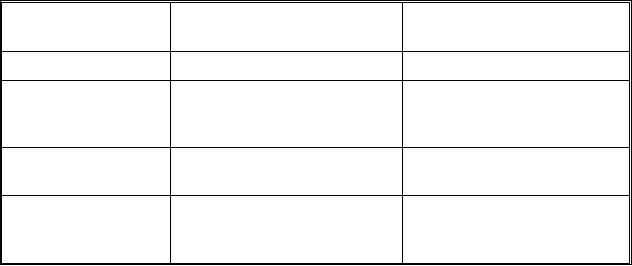
Table 4-1. Fire Classifications
FIRE
EXAMPLES OF TYPES OF
TYPE OF EXTINQUISHER
CLASSIFICATION
MATERIAL
ALPHA
Wood, paper, cloth, upholstery
Water
BRAVO
Flammable liquids, such as
AFFF, Halon 1301, PKP, CO2,
gasoline, jet fuel, paint, oil,
water fog
grease
CHARLIE
Electrical equipment and wiring
CO2 and Halon 1211 are
preferred; PKP can be used
DELTA
Combustible metals, such as
Jettison from ship, large
magnesium, titanium, and
volumes of water and sand
sodium
THE EFFECTS OF FIRE
REVIEW QUESTIONS
Learning Objective: Recall the effects of fire.
Q4.
What class of fire occurs in combustible
A burning substance produces a number of
metals, such as magnesium, titanium, and
chemical reactions. These reactions produce flames,
sodium?
heat, smoke, and number of gases and other
combustion products. The gases and combustion
1.
ALPHA
products will reduce the amount of oxygen available
2.
BRAVO
for breathing. All of these effects are vitally important
3.
CHARLIE
to you as a fire fighter. You must be prepared to protect
yourself against them.
4.
DELTA
Q5.
Class ALPHA (A) fires leave embers or ashes
FLAME, HEAT, AND SMOKE
and must always be overhauled.
Personnel must be protected from the flames, heat,
1.
True
and smoke to avoid injuries or loss of life. Before you
enter a compartment or area where there is a fire, you
2.
False
need to be dressed out properly. You must tuck your
Q6.
What type of fire occurs in electrical
pants into your socks, button the collar on your shirt, and
equipment?
put on a helmet. Wear any other protective clothing
prescribed by current directives. If you are a nozzleman
1.
ALPHA
or hoseman, you will also need to wear protective gloves
2.
BRAVO
and an oxygen breathing apparatus (OBA). The flames
3.
CHARLIE
and heat from a fire can be intense. However, if you are
dressed out properly and maintain adequate distance,
4.
DELTA
you can minimize your chances of getting burned. The
Q7.
What type of fire occurs in the vapor-air
smoke will make it hard to see and breathe. However,
mixture over the surface of flammable
you can cope with these problems by wearing an OBA
and a headlamp.
liquids?
GASES
1.
ALPHA
Some of the gases produced by a fire are toxic
2.
BRAVO
(poisonous). Other gases, although nontoxic, are
3.
CHARLIE
dangerous in other ways. We will discuss briefly some
4.
DELTA
of the more common gases that are associated with fires.
4-3

